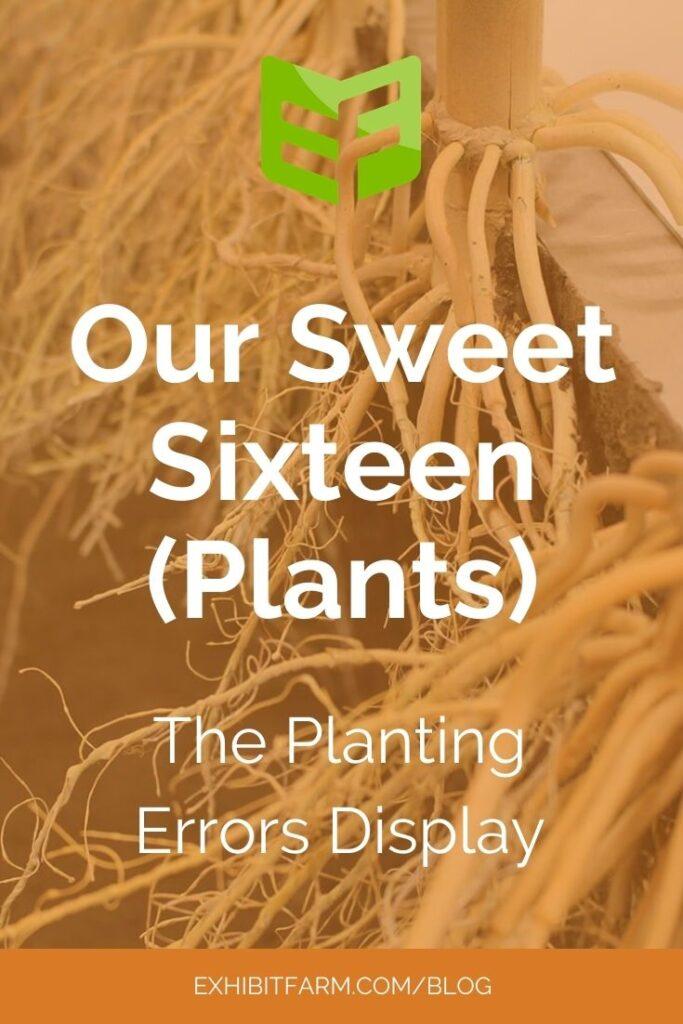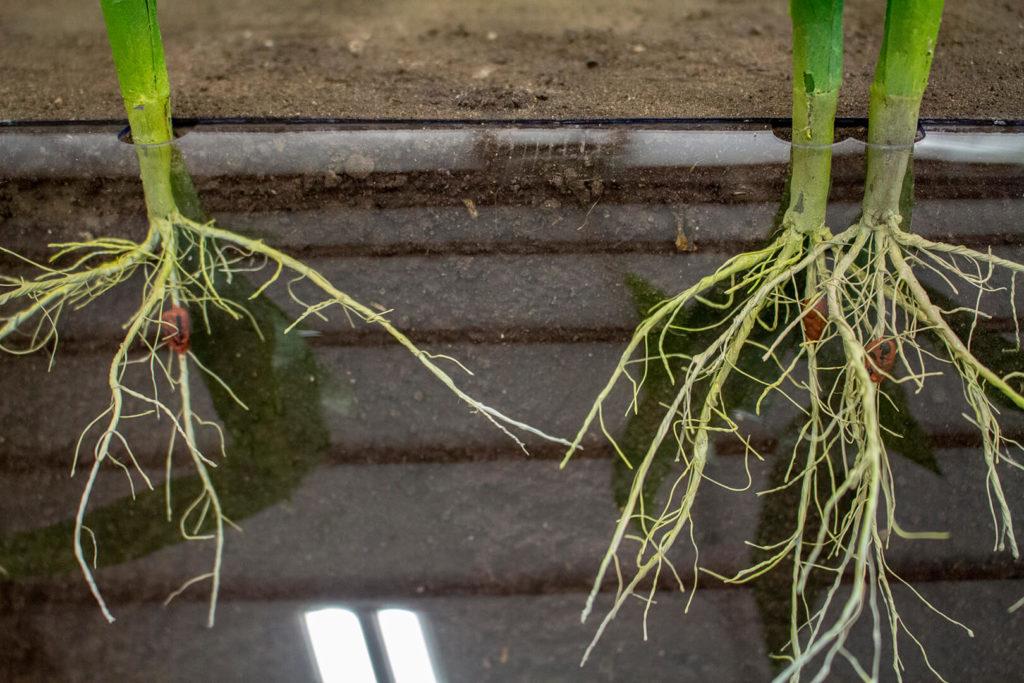
Precision agriculture’s been around for several decades, but it really took off in the 21st century. With that expansion came lots of new agritech companies. And that presents a challenge: how can you make your technology stand out in a large pool of precision ag equipment?
When our clients at Precision Planting faced that question, they opted for investing in a custom display. Not just any display, though: a educational display about planting errors featuring over a dozen life-size artificial corn plants.
(Check out extra photos of the Planting Errors Display on our custom products page.)
Visualizing Planting Errors
Precision Planting focuses on helping farmers handle everything from planting to fertilizing in the most efficient way. Some of their equipment helps eliminate planting errors. As it turns out, there’s a lot of ways planting errors can happen. Seeds planted too close together, seeds planted too deep, seeds planted in the side of a furrow, rather than in the bottom… In every case, the planter might miss the right spot by only a little bit, but the impact on the plant can be huge.
It can also be hard to visualize that, though. After all, misplacing a seed by an inch or two might not sound like it makes much difference. That’s why Precision Planting wanted us to make a display about planting errors, to show people what the impacts are. And they wanted to be thorough.
All told, the Planting Errors Display contains sixteen sweet corn plants. Eight are just seedlings, and eight are harvest-ready cornstalks. In each bunch, there’s one healthy plant and seven less-healthy plants showing the effects of different planting errors. We’ve made plenty of corn plants before, of course, but none quite like this.
Crafting the Planting Errors Display
In the first place, Precision Planting wanted the harvest-ready stalks to include exposed corncobs, to show how planting errors affect the plant’s yield. That was a new one for us. Nevertheless, our craftsmen figured out how to sculpt the cobs, attach some “silk,” wrap the whole thing in leaves, and secure it to the plant.

With that engineering challenge down, they turned to the roots. Many planting errors impact the root system, so it was important to show them clearly. We’d never made roots before, but that didn’t stop our craftsmen from developing a solution. They created individual roots in different sizes (based on a diagram of real corn roots) and then attached them together to create a realistic bunch.
Even our office people got to participate in the fun — at one point, we called all hands on deck for a day-long root-making intensive. It paid off with dozens of roots ready for bundling into complete systems.
With every element in the Planting Errors Display made by hand (the roots, the corncobs, the stalks, the leaves), you can imagine how big an undertaking this was. But eventually the displays were assembled and every lifelike detail was in place, right down to using real dirt for texture in the “soil” (protected under a layer of clear acrylic).
As we thought about the job afterwards, we realized it hadn’t just been a big project tackled successfully. Engineering the corncobs and roots gave us the skills to make our corn plant models even more lifelike and realistic. That meant we could offer our clients more options going forward (such as a standalone corn plant with exposed roots). Now that’s a sweet outcome, for sure.
